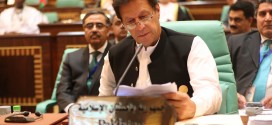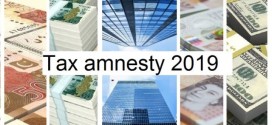The new growth framework developed by the Planning Commission is an innovative plan that seeks accelerated and sustained growth and development
Planning Commission of Pakistan evolved a new strategy to boost the long run growth of the economy. This strategy is based on the consensus that without economic growth, country cannot be put on the path of progress and prosperity with a population of 180 million people which is growing at 2 per cent per annum. The current strategy based on Public Sector Development Program (PSDP) and use of public resources to build infrastructure and other projects is not adequately addressing the development needs of the country. The Planning Commission has so far developed and implemented nine plans and visions but the provision of social services and infrastructure facilities could not bring relief to the general public at large, positively contributing to the national economy in the backdrop of rapidly growing population. Our planning mechanism is simply the ‘Public Sector Development Plan’ and the ‘projects’ it funds. We could not maintain a decent economic growth rate and went through boom and bust cycles in our history of over 60 years.
The low growth and failure of old approach prompted the current Deputy Chairman, Planning Commission, Dr Nadeem-ul Haque to introduce an innovated approach to the planning mechanism for accelerating growth for better service delivery. Dr Haque pointed out that the country is losing Rs 300-400 billion per annum through PSDP. While the growth rate has been very volatile, the long-run growth is continuously declining because we have forgotten economic growth as policy. We rely on foreign aid and projects for economic growth and that went down to 2-3 per cent 7 percent. Citing the examples of India, Bangladesh and Sri Lanka as the grown up economies, he said Pakistan is the only country in the region where growth rate is continuously falling. A change is must now to stop this situation. In this respect, government has already initiated fiscal decentralization and resources transfer process as per NFC award. The process is expected to ensure provision of basic facilities to a major portion of population.
While growth of economy is an important issue, our policy maker should not forget to device a mechanism to develop a vibrant youth and community. Around 68 per cent of the country’s population is under 30 years and regarded as youth. Many of them are entering the labour force, increasing the size of the workforce by over three per cent annually. To absorb the youth bulge productively, the real gross domestic product (GDP) needs to grow at an annual average rate of more than 7 per cent. This can only be achieved through quality education to children. Education is however not our priority and country spends only 1.24 per cent of the budget for education. In contrast, countries like Malaysia spend 23 per cent of their budget for this purpose. There is a need to improve our education system but that requires political will and coordinated efforts. An innovative approach is needed for this purpose and for that people from all walks of life need to be consulted. For a better future generation, a country has to grow both economically and socially having education a key role in the process.
The new growth framework developed by the Planning Commission is an innovative plan that seeks accelerated and sustained growth and development. The consultative sessions were held throughout the country to seek the input of renowned experts and stakeholders, including economists, academia, civil society organizations, development partners, provincial governments, line ministries, regulatory bodies and parliamentarians. The growth diagnostics point to two important constraints to economic growth. The first is inadequate market development because of tax, tariff and policy distortions, entry barriers, government involvement, poor regulation and lack of competition. The second is lack of efficient public sector management to provide core governance goods such as security of life, property, transaction and contract and facilitate markets.
The new strategy is a move away from the old mechanism of public sector development programme to innovative approach. It emphasizes more on reforms in bureaucracy, vibrant competitive markets, new cities and demography of the country to accelerate growth rate. The role of state is considered the main driver of growth. Besides building infrastructure, high rise buildings and highways, we should focus on better government, good governance, competitive markets, creative cities and conducive environment for trade and entrepreneurship. Dr Nadeem ul Haque, while presenting the new growth framework said We need to manage all the sectors of governance including old magistracy system. We still have not introduced technology to the government institutions and running a civil structure of 19th century without reforming the same. Dr Haque further said, We need to have creative cities connected not just with highways, but connected intellectually, physically and culturally with the hub of globalization. The growth strategy must target youth and community.
The new strategy is a move away from the old mechanism of public sector development programme to innovative approach.
At the first stage, the framework envisages to achieve 5-6 per cent annual GDP growth rate for the revival of the economy. This could be achieved in a short time if energy and governance issues are resolved along with credible macroeconomic stability. The strategy suggests deep and sustained reforms in areas such as public sector management, developing competitive markets, urban management and connecting people and places as a way forward for accelerating growth to above seven percent. The new vision for economic growth will require periodic identification of emerging constraints to economic growth through research and dialogue with all sectors and stakeholders, consensus building through extensive consultations on the reforms and programs that will be required for removing these constraints; and building a system for measuring productivity and public service delivery and developing and monitoring quantifiable plans regularly. In this regards, implementation of policies is important along with the policy-making and making regulations and for that change of mind sets and bureaucratic set up is essential that hinders the implementation process.
 Jahangir's World Times First Comprehensive Magazine for students/teachers of competitive exams and general readers as well.
Jahangir's World Times First Comprehensive Magazine for students/teachers of competitive exams and general readers as well.


